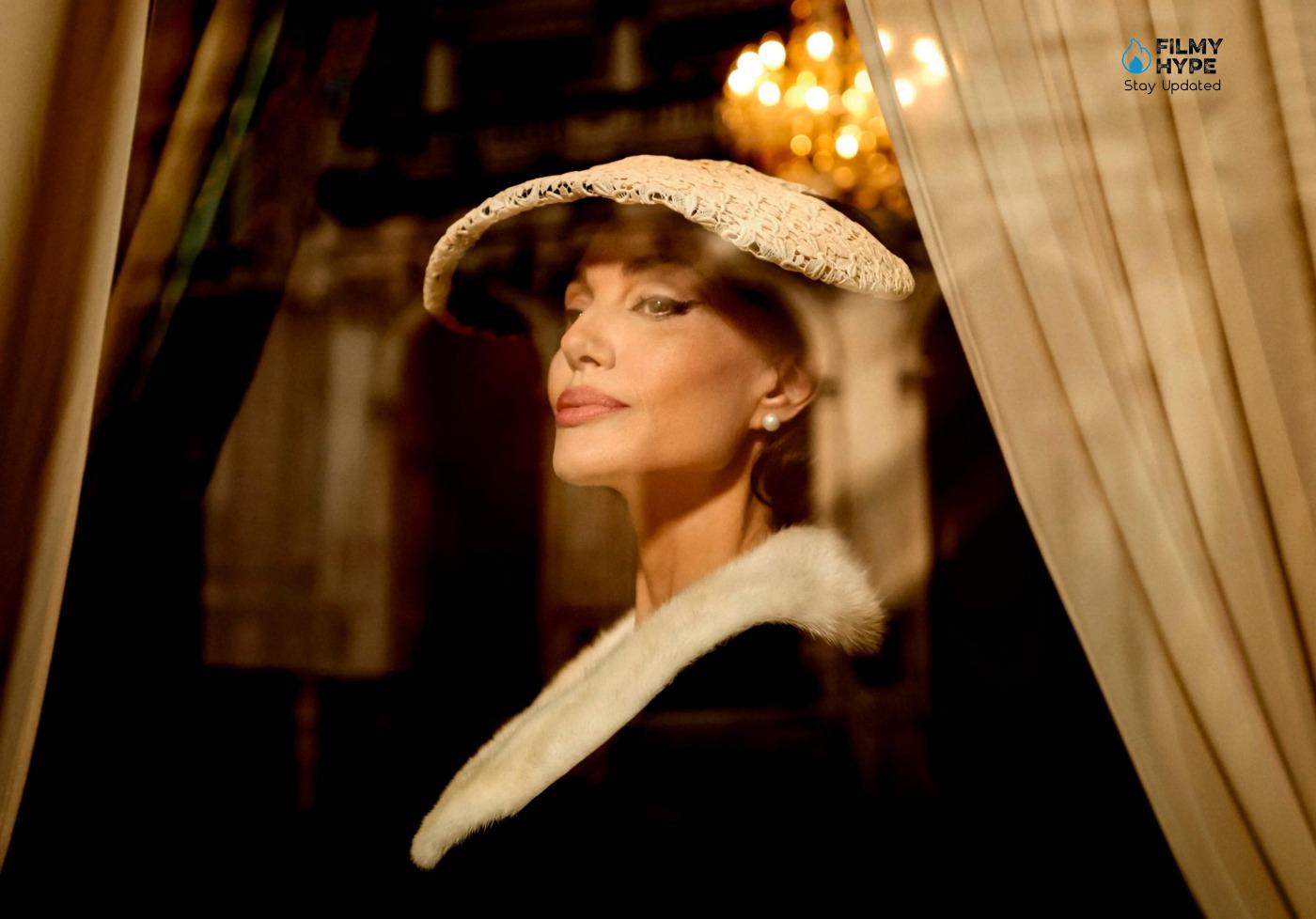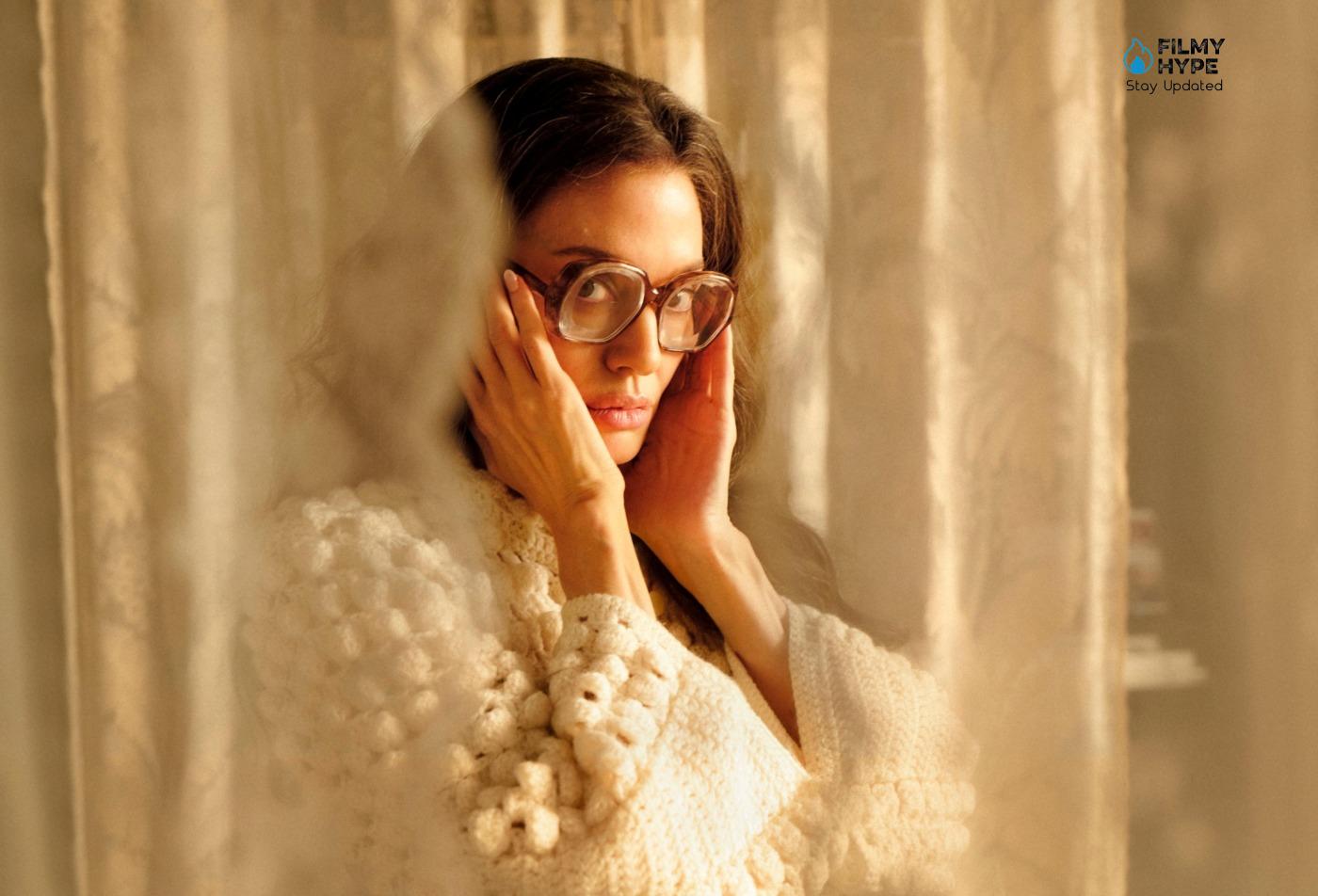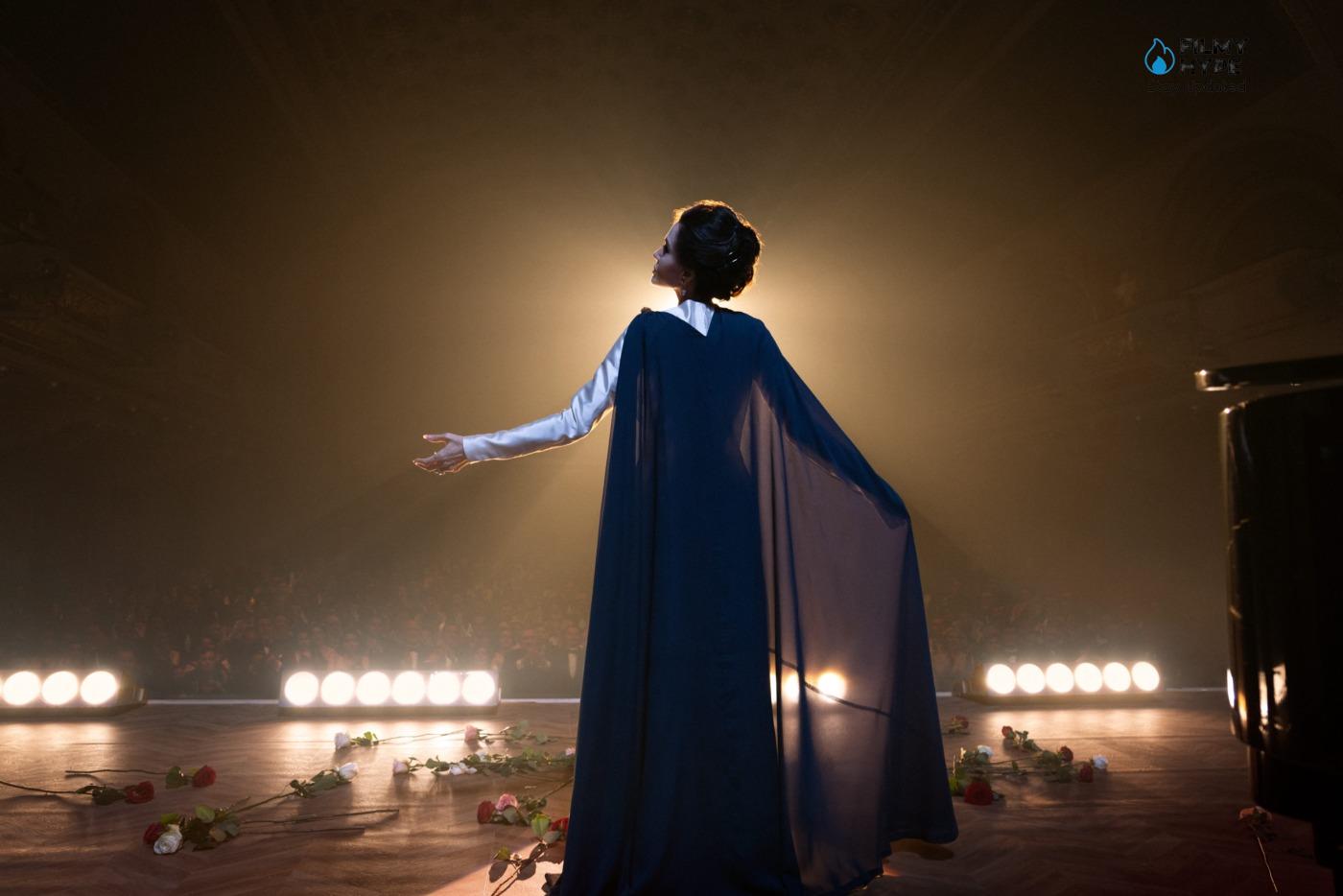Maria Movie Review: Dragging the Viewer on a Visionary and Unforgettable Journey | Venice
Cast: Angelina Jolie, Valeria Golino, Pierfrancesco Favino, Kodi Smit-McPhee, Alba Rohrwacher
Director: Pablo Larraín
Where We Watched: At the Venice Film Festival, press preview
Filmyhype.com Ratings: 4.5/5 (four stars)
Maria is the typical film project that arouses regret during and immediately after viewing. We know how it works: to set up an Italian-German production of this level, to interest the international market and move names like that of the Chilean director Pablo Larraín, you need a presence of weight, a star in the role of the protagonist. A name like that of Angelina Jolie, who alone ensures the event: Angelina in the role of Maria, the Jolie who plays Callas. In a fairer world, the name that attracts attention should be that of Pablo Larraín, a proven first-class author, someone who hasn’t really made a bad film in over a decade. He arrived in Hollywood with the reputation of being able to pull divas in search of artistic recognition into a sprint towards the Oscars. He did it for Natalie Portman with Jackie, he did it with Kristen Stewart with Spencer. Talent like that is sought after. It’s a shame that when he shoots in English, he is constantly caged in these hagiographic portraits of twentieth-century female figures, iconic in their subtle existential sadness, Jackie Kennedy, Lady Diana, and now Maria Callas.

If the films in question aren’t a complete failure, it’s because Larraín puts that something extra in them, transforming them into something else, something higher, something memorable. In between American films, he shot the crazy and radical Ema (his first and so far only directorial dash) and the bold political satire El Conde with Netflix, returning to his decade-long obsession with what Pinochet did to his Chile. One of the best vampire films and one of the best films about political dictatorships and their aftermath of the last ten years. Larraín returns to enchant Venice with yet another title dedicated to an extraordinarily emblematic female figure, in his third film in a triptych dedicated to women who have marked history: after Jackie and Spencer, the Chilean author tells the story of Maria Callas. The connection with his other most successful films is evident, and Callas’s biography concludes this undeclared “trilogy” in the best possible way. The themes of the other two films re-emerge more or less predominantly during the viewing, supported by the splendid performance of Angelina Jolie more in character than ever. As we will see in this review of Maria, previewed at the 2024 Venice Film Festival, Larraín’s Callas is strong and fragile, courageous and exhausted, a character who has reached the end of her existential journey and is finally ready to retrace her entire life in her memory.
Maria Movie Review: The Story Plot
The story that Larraín chooses to tell begins during the last week of Callas’ life, a week that serves the artist to retrace her experiences and say goodbye to those who accompanied her in her existence, those who are still here, and those who have already passed away. In the days preceding her death, which is anticipated in the first minutes of the film, we are accompanied on a visionary journey through memories, fantasies, daydreams, and conversations with imaginary characters. Sequences and images that allow us to discover Maria in the complexity of her most intimate emotions. Opera music, of course, is a constant presence throughout the narrative, a second protagonist alongside Maria Callas, a patient friend who follows her during her last hours. It is thanks to her voice that Maria has achieved the most dazzling success but, as we see in the fragments of history that tell of her childhood in Athens, she has also been forced to the darkest depths. This dichotomy is often present in the film and allows us to appreciate even more the complex characterization of the protagonist.
Maria Movie Review and Analysis
What gives the film such a fascinating soul is both the visionary nature of its director and the interpretation of its protagonist, who gives life to a Callas who, although she does not particularly resemble her from a physical point of view – in the same way as Lady D and Jackie and their interpreters in Larrain’s previous works – perfectly embodies her most intimate and tormented nature. Angelina Jolie gives us a truly extraordinary performance, striking for the intensity with which she brings to the big screen an ethereal and unexpected Maria Callas, who delicately slips between the walls of her apartment and the streets of Paris, together with memories of her past and spirits that only she is capable of evoking. With her are Ferruccio and Bruna (played respectively by Alba Rohrwacher and Pierfrancesco Favino ) butler and housekeeper, friends, jack-of-all-trades, and only true comfort in this lonely period of her life.
The relationship between the three is one of the most touching elements of the narrative, and the protagonist’s crazy whirlwind of imagination (which defines the tone of the film) is tempered in the best way by their solid presence. As we said at the beginning, Maria closes a hypothetical trilogy on three female figures who have in their own way marked the history of the last century. Jackie, Spencer, and Maria dialogue much more than it might initially seem, both for the themes they deal with and for the narrative language used. Jackie O. and Maria Callas touch each other on several occasions in their lives, Maria and Diana are instead told as incarnations of a tormented Anne Boleyn, a tragic historical figure with whom Larraín’s women always have something in common.
Maria is the perfect summa of his two most successful (and beloved) works: the Chilean director once again does what he does best, that is, explores the minds of complex female figures, narrating them with images of impressive visual power. Many sequences in Maria have deeply affected us, but we cannot fail to mention the one that sums up the heart and aesthetics of the entire film. Angelina Jolie’s Callas walks towards the Eiffel Tower, with opera music accompanying her every step: “It’s the crowd performing for me” she says, in front of an orchestra composed of passers-by, who in her imagination transform into a spectacular procession. Music was the backbone of her existence, it defined her soul, and the film can show it to us in the clearest and most evocative way possible.

Three acts, like in a classical opera, accompany the story of the last days and moments of the artist’s life, who in continuous flashbacks between reality and imagination retraces a life that no longer belongs to her. Memories resist time, the rigor of the mind opposes the transience of the body, and although the voice “is no longer the same” it tells of a lost identity. The psychological profile traced is clear, a leitmotif of the director who exalts duality and split of the public figure / private sphere. The success and exaltation combined with the fragility of those who, once the stage lights are turned off, seem lost. “Can I call her Maria or La Callas?” the imaginary journalist of the biopic on the artist will ask, not by chance.
Angelina Jolie, chosen as the protagonist, does her job to the best of her ability and, as in the final act of the film, she puts all of herself into emitting a homogeneous sound and bringing out in a dignified way the portrait of an unattainable celebrity, even for her. She plays by subtraction, she tries to hide – and in the second half of the film she does it even better, making the character less artificial – behind the diva, she sends us back that intelligence and assertiveness that surely belonged to a personality-like Callas. But she fails to move us to the full. She does it at the end, in the most intimate moments in which she strips herself of the interpretative rigidity – and perhaps also personal – that she seems to impose in some way on herself.
The portrait of Maria therefore seems to succeed in part. Because haughtiness and fragility seem to lack the other ingredients belonging to such a great artist. Perhaps due to a sense of deep reverence and devotion, Larraín’s “Maria” fails to go beyond the story of melancholy and pain. Much is focused on the description of a narcissistic-like obsession typical of her characters, in a continuous and spasmodic search for themselves made possible only thanks to the experience of suffering. The love affair with Aristotle Onassis (Haluk Bilginer), for example, is barely hinted at, suffocated by the story of the brutality and imposing nature of a character who actually represented everything for Maria. Not just contempt and resentment, but the possibility of “finally getting out of the cage” in which, in reality, she would then be locked up again. Perhaps some of you will remember a very young Luisa Ranieri in the role of Maria, who instead told of that passion in a much more explicit way…

What makes Angelina’s interpretation perhaps more “human” and reachable is the connection and sympathy that is created with the other two protagonists (our impeccable Pierfrancesco Favino and Alba Rohrwacher) who play a fundamental narrative role precisely because they manage to make her lower her defenses. To send us back the complexity of a rebellious figure, but full of life before the end came. Because even the end, before being such, was still a beginning. Callas also says it, both in the film and the 1976 interview: “I stopped singing because the public has evolved, and I felt like I was always demanding more from myself. I have given and received a lot, but I feel fully satisfied and I cannot be stingy”.
Larraín’s film, in the classicism of its shots, in the slowness of its sequences, in Edward Lachman’s illuminated and illuminating photography, remains a sort of hymn to perfection, a well-executed artistic portrait. And that piano, moved by poor Pierfrancesco from one side of the room to the other, is the story of a “stowaway tossed by the storm in the hold”, as Michele Mari would say in One Hundred Love Poems to Ladyhawke. That voice that breaks, that identity that cannot be found, that torment that is recognized in the power of the notes of “Tosca” and the suffering of Mario Cavaradossi, reaches us with great emotion. But it only partially reflects the portrait of an artist who lived intensely, in a visceral relationship with affection and with music, an indestructible traveling companion. Because for someone like Maria Callas, one of the most classic Greek tragedies, the curtain never closes.
Maria Movie Review: The Last Words
Maria is the perfect summa of Larraín’s filmography, a profound and touching female portrait, capable of dragging the viewer on a visionary and unforgettable journey. With Maria Pablo Larraìn closes his trilogy dedicated to three icons of the 20th century: after Jackie Kennedy and Diana Spencer, he is overwhelmed by Maria Callas. A tragic and rebellious figure, gifted with one of the most extraordinary voices ever, but who self-destructed. Angelina Jolie plays her in an Oscar-worthy performance. Perhaps the best of her career.

Maria Movie Review: Dragging the Viewer on a Visionary and Unforgettable Journey | Venice | Filmyhype

Director: Pablo Larraín
Date Created: 2024-08-29 15:18
4.5
Pros
- Angelina Jolie's interpretation
- The visionary nature of Larraín
- The use of opera music, which becomes another character in the film
- The beautiful photography
Cons
- Some passages of Maria Callas' life are a bit confusing and some spectators might turn up their noses

